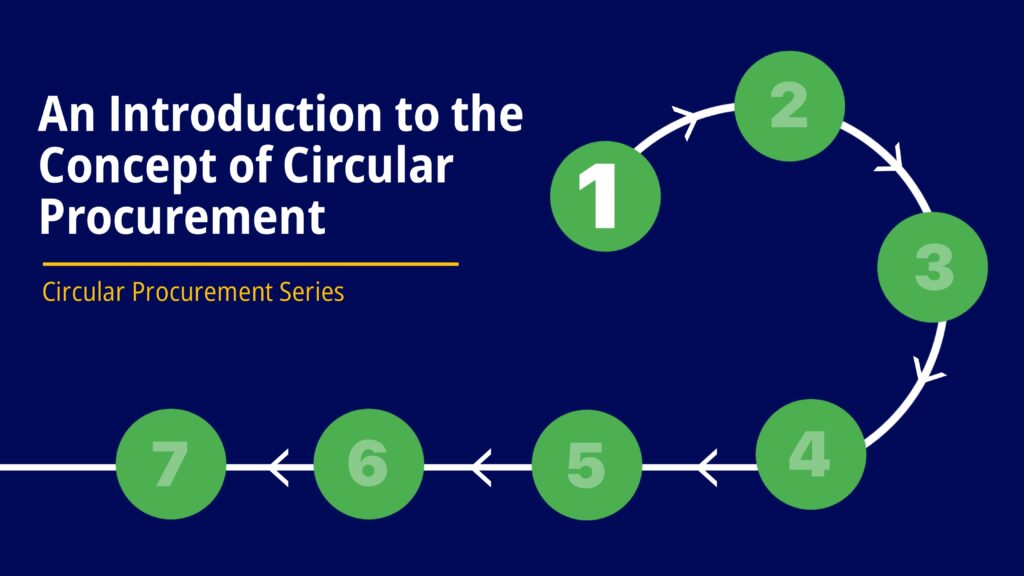An Introduction to the Concept of Circular Procurement.

The economy is driven by purchases, everyday countless organisations and individuals file in and out of shops, marketplaces and business centres, making transactions and contributing to the growth and development of the economy be it the local economy operational where they reside, or globally, as business today is done across the borders.
In recent years, the concept of a circular economy has gained increasing attention as a way to address the growing environmental challenges facing our planet. A circular economy aims to minimise waste and optimise resource use by closing the loop on materials, products, and services, thereby creating a more sustainable and regenerative economy and as such procurement becomes a critical component of the circular economy, representing a significant opportunity to drive sustainable change across the entire supply chain.
Circular Procurement is a strategic approach to purchasing that takes into account the entire lifecycle of products. Unlike traditional procurement, which often focuses solely on the purchase cost, circular procurement considers the environmental and social impacts of a product from design and production to its eventual end-of-life disposal. Its aim is to diminish dependence on new materials, prolong the lifespan of existing materials, and endorse businesses that advocate circular business models.
The need for circular procurement is deeply rooted in the current state of global production and consumption. Our world is grappling with unsustainable levels of production and consumption. The global population is expected to reach 9.7 billion by 2050, which will put even more pressure on resources and consumption patterns. According to the Global Footprint Network, we are currently consuming 1.7 times the Earth’s regenerative capacity, meaning it takes the planet 1.7 years to regenerate what we use in a single year. These numbers indicate that a drastic shift needs to happen on both the consumer and producer side to aid circular procurement.
So, how does Circular Procurement work? It involves a series of strategic steps some of which include analysing how products are designed, produced and managed throughout their lifecycle, but beyond that defining a criteria for Eco-friendly products bearing in mind the environmental and social sustainability of the product in question.
However, implementing Circular Procurement is not without its challenges. There is bound to be resistance from many organisations trying to shift from traditional procurement practices, where price often takes precedence. Yet, it’s worth noting that companies that invest in sustainability outperform their counterparts by 25% in the long run. There is also the issue of a general lack of awareness and knowledge about Circular Procurement, making it essential to educate stakeholders about its benefits. The biggest hurdle would most likely be the regulatory hurdles. Sometimes, regulatory and policy frameworks do not support circularity, posing challenges to circular practices.
Despite the challenges attached to Circular Procurement, organisations and individuals alike are beginning to put the concept into practice. Take the Green Hub, designed in the University of Lagos, Lagos, Nigeria earlier this year. True to its name, the design of the entire hub was planned from the ground up to be circular in nature, from reusing steel shipping containers for the building to ensuring that furniture fittings were all procured from local business Plastic Build Solutions, a company that designs interiors using waste tyres and other materials. This action not only encourages the business owner, but also encourages people who come into the hub to be more circular conscious haven seen that it is indeed possible to do so.


